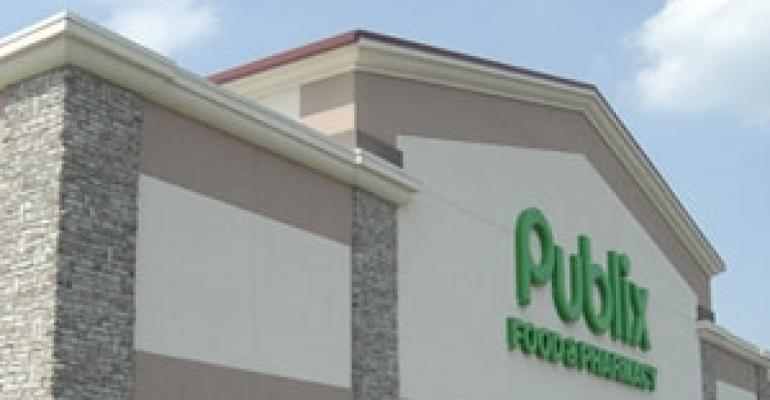As more grocery-anchored center owners decide to put their properties on the market to take advantage of strong investor demand, grocery chains are stepping in and claiming the centers they anchor to avoid risking the uncertainty of a new owner.

“In many cases, grocery chains have the first right of refusal when a property is for sale, and when they want to control their destiny, they’ll take advantage of the opportunity to purchase the center,” says Kris J. Cooper, managing director of capital markets in Jones Lang LaSalle’s Atlanta office.
The biggest grocery chains in the U.S. have invested nearly $450 million in grocery-anchored center purchases during the past 24 months, according to Real Capital Analytics (RCA), a New York City-based research firm. Lakeland, Fla.-based Publix, which operates 1,058 stores in five southeastern states, has been the most active buyer during this period. The chain spent $187.2 million to gain control of 17 grocery-anchored centers, making it one of the 10 most active buyers of this asset class. It owns roughly 170 of its stores overall in addition to some of shopping centers in which they’re located. Dutch conglomerate Ahold, which operates the Stop & Shop and Giant chains, during the same time also purchased 17 properties for $118.4 million.
“Publix is the most active buyer of grocery-anchored centers in the southeast,” says John Crossman, president of Crossman & Co., an Orlando, Fla.-based third-party leasing and management company. “Sellers like to work with Publix because they have certainty of close—they’re a good buyer.”
Likewise, Ahold USA Inc., which owns and operates stores under the Stop & Shop and Giant banners, has been actively acquiring centers, taking down $118.4 million worth of properties during the same 24-month period. The Quincy, Mass.-based chain also ranks as one of the top 10 most active shopping center buyers, right behind Publix, according to RCA.
Publix and Ahold, which declined to talk about their acquisition activity, aren’t the only chains that have scooped up shopping centers. Kroger, Safeway and Wal-Mart Stores also often own their own stores or have taken control of entire centers.
In the past 24 months Kroger has purchased nine shopping centers for $61.7 million, according to RCA. Overall, 45 percent of Kroger’s 2,435 stores operate out of company-owned facilities, according to a recent investor package produced by the chain. The Cincinnati, Ohio-based company says it saves $1 per square foot per year by owning its stores versus leasing.
Wal-Mart, meanwhile, has purchased four centers in the last two years for $24.8 million, according to RCA.
Good investment
Cooper notes that many grocery chains not only save money by owning the centers they anchor, but end up with quality property investments.
“Food is a thin margin business, and real estate probably offers some of them greater profit potential,” he says. “But, more importantly, it’s a control issue—they don’t want to lose control of their stores. I have to think the decision to buy is a defensive move to protect their best performing stores.”
Despite their collective buying power and competitive positioning as investors, however, grocery chains are not impacting the pricing of shopping centers.
“If they’re taking advantage of the right of refusal, they’re matching an offer, not outbidding the other buyer,” Cooper says.
In many deals, grocery chains are buying shopping centers directly from developers, he adds. Although construction financing is more available than it has been, it’s not abundant, and many developers must sell their existing stock before they can tackle new projects. The grocery chain is a natural buyer in that situation since it’s already familiar with the property and has a vested interest in its success.
Indeed, Crossman says its makes a lot of sense for a grocery chain to own centers where it does business, especially since customers often get confused and believe the grocery chain owns the shopping center even when it doesn’t.
“There are a lot of great shopping center owners that are proactive and take care of their centers and the customers, but there are also some owners that don’t, and when customers are unhappy about something – the condition of the parking lot, for example—they’re going to complain to the grocery chain,” he notes. “The owner can make the grocery chain look bad, and sometimes it’s a better for the grocery chain to buy the center.”

